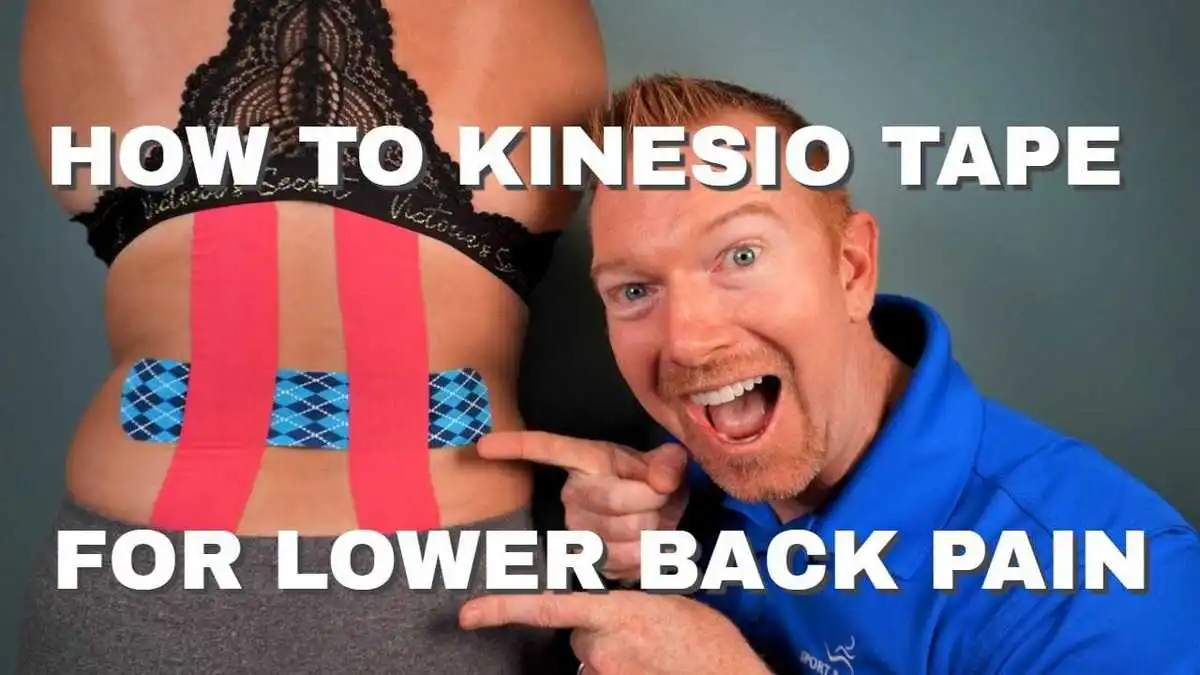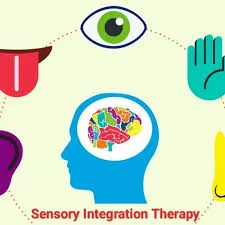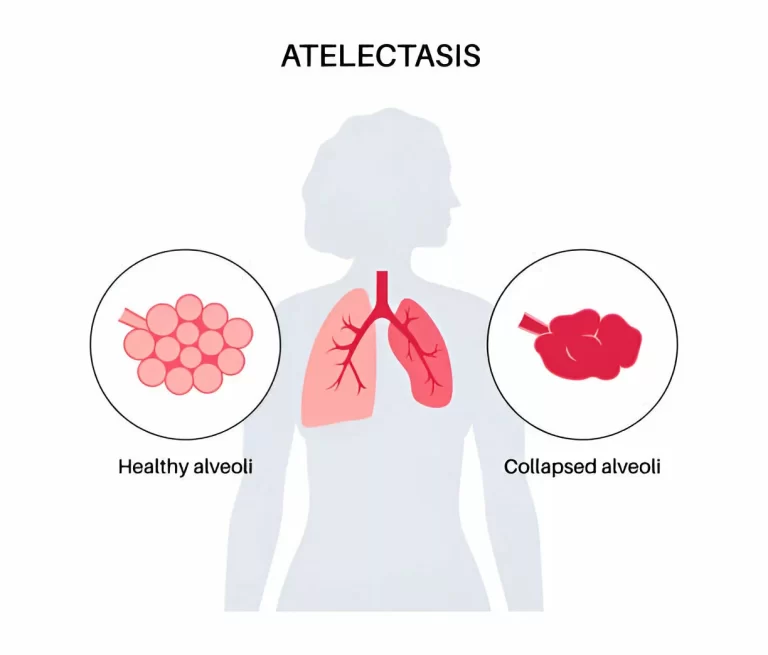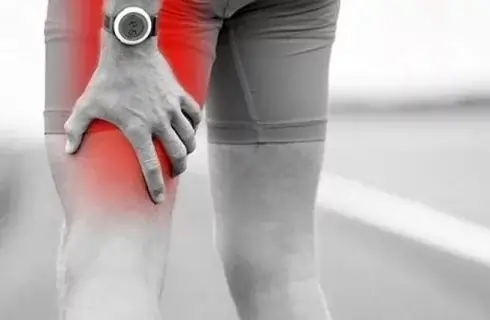KT Tape For Lower Back
Kinesio tape or Kt tape for the lower back can be a helpful supplement to your lower back pain treatment approach. It is a kind of thin, elastic tape that is used to support the skin and reduce discomfort. The tape improves function in the lower back by increasing awareness of joint positioning.
In addition to promoting better posture, reducing inflammation, improving muscle function, and increasing circulation, Kinesio tape may also reduce the strain on the lower back.
Kinesiology tape can help your back and a few other painful areas whether or not you are an athlete. Experts agree that further research is necessary, but some have highlighted the advantages of kinesiology tape. For example, a 2019 study discovered that knee osteoarthritis patients required less pharmacological treatment when using elastic taping. According to a different study, kinesio tape works best for lower back pain when it is used together with other pain management techniques.
Introduction
The lower back’s function is improved by the tape’s ability to raise awareness of joint positioning. Additionally, kinesio tape can enhance muscle function, reduce inflammation, improve circulation, and improve posture all of which can lessen the strain on the lower back. When faced with back pain, patients are frequently tempted to start with mobility/flexibility exercises and self-diagnosis.
What is KT Tape?
KT tape, sometimes referred to as elastic tape, kinesiology tape, or Kinesio tape, is a type of tape that is applied to the body that differs from standard strapping tape in that it is somewhat stretchy. Typically, it’s used to support a joint, boost circulation, or put proprioceptively, which is the ability to provide feedback to the brain regarding a joint or muscle. By drawing attention to a particularly painful area, the tape can serve as a helpful reminder to avoid painful or incorrectly positioned movements.
There are two main purposes for taping someone: to increase awareness or provide support. The effectiveness of KT tape needs to be further investigated, so the decision remains out. Professionals do, however, think it helps with back pain and other conditions, so maybe it’s not just a placebo effect. Using KT tape isn’t intrinsically dangerous (unless you’re trying to apply it yourself, in which case you run the risk of getting further hurt). Overall though, because it’s a drug-free therapy approach, it’s worth a try, and thanks to its increasing popularity, you can get it at almost any pharmacy these days.
What are KT tape’s possible advantages for back pain?
When someone else applies kinesio taping for low back pain, they typically do so in a shortened muscle position, meaning that the person applying the tape would be standing.”The taping can often be two stripes running up and down [the back] or it can be a fan shape as it fans out towards the buttocks.
It can be informed that KT tape can help relieve lower back pain by supporting the lumbar spine muscles specifically and by reducing pain overall. Given that low back injuries account for 10% to 15% of all sports injuries, it is understandable why so many athletes especially Olympians resort to KT tape for relief. Kinesiology tape is used by triathlete Matt McElroy, skateboarder Heimana Reynolds, and marathon runner Molly Huddle.
- Back pain relief.
- Improve posture.
- Improve injury recovery.
- Give lumbar muscle support.
- Helps in herniated discs.
- Helps with muscle strain.
- Improve flexibility.
- Improve mobility.
- Drug-free pain relief.
- Improve athletic performance.
What the research says about KT tape for back
As previously indicated, the effectiveness of kinesiology tape for back pain remains somewhat unclear despite extensive research. The data is weak and indicates that KT tape is not very successful. Still, it is possible to argue that the research hasn’t proven it yet.“
People with back pain have reported that they “really enjoy wearing it” and “feel benefits from it” after they apply kinesiology tape.”I think there’s a lot to be said about the placebo effect, “and if someone believes something is helping them feel better, then it does.”
When to use kinesio tape on the lower back
Kinesio tape can be extremely beneficial in going back movement to a certain part of the back of patients who fall into the “instability” zone. From simple hypermobility that causes some pain and irritation, spinal instability can be categorized along a line. Exercise, bracing, ergonomics, and postural correction are frequently effective ways to manage this. In between these two extremes, it can also be classified as pathologically unstable, necessitating surgery.
Kinesio tape is frequently used to help “stabilize” the lower back in cases of low back pain and instability that fall into the range where additional Sensory information may help normalize motion and rest irritated tissue. Keep in mind that the tape is not stabilizing the spine mechanically. For external stability of the lower back, one needs a lumbosacral orthotic or back brace. Kinesio tape, on the other hand, could help in neurological stability by providing additional details about joint position and posture to a person experiencing low back pain specialist.
The role of KT tape in the prevention and recovery of spinal conditions:
Low back pain can benefit from using kinesiology tape as part of your treatment plan if your goal is to avoid or treat difficult spine conditions. In this case, the KT tape can help with pain management, circulation improvement, and support. However, keep in mind that KT tape is just one component of a comprehensive schedule and probably won’t work by itself.
A person with back pain probably needs hands-on treatment in addition to stretches and strengthening exercises. I strongly advise anyone experiencing imbalances and dysfunction in their body to consult with a physical therapist, adding that KT tape should be used alongside manual therapy and stabilization.
Relaxing kinesiology tape for lower back pain
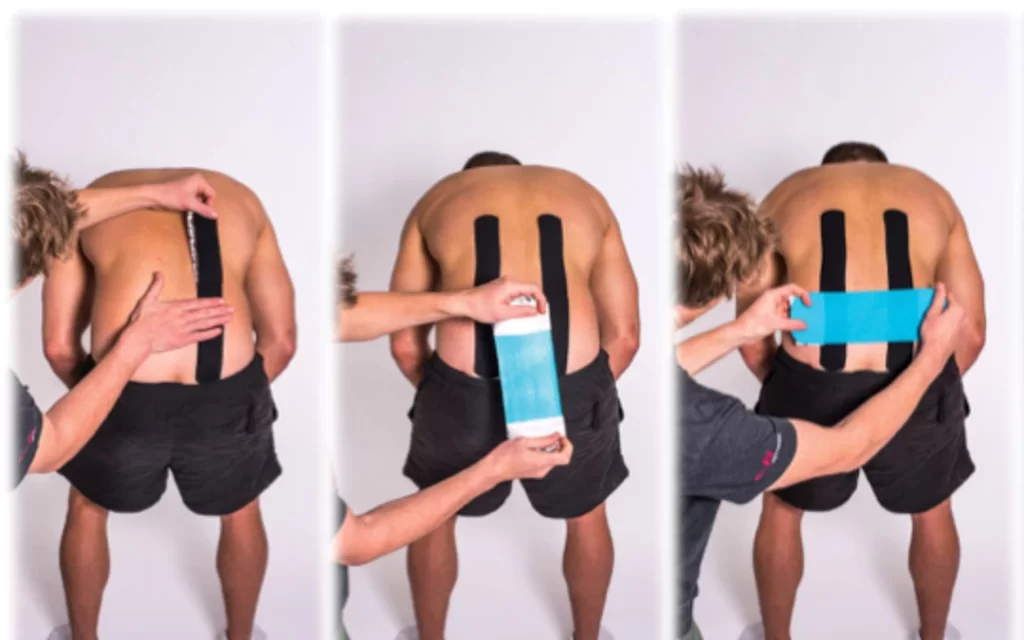
Lower back pain is frequently caused by increased tension in the dorsal trunk muscles (quadratus lumborum). To release tension and promote natural posture and movement, which accelerates the healing process, we suggest using the kinesiology taping/strapping application below.
Taping application
- Cut two 30cm strips of Kt Tape
- Spread the base of the tape strip in the neutral position.
- Ask the patient to bend forwards (flexion)
- Put the strips with 10 to 15 percent lengthening and allow the patient to return to a neutral position and fix the anchors.
- Have the patient flex over again and rub the tape to warm up the adhesive and allow optimum adhesion.
Taping/strapping for general Lower Back Pain
Natural motion is stimulated when the kinesiology tape is applied as the instruction below indicates, and this is essential for the healing process.
Taping with kinesiology for lower back extension complaints
Taping of the erector spinae and lumbar extensors is advised for lower back extension complaints. The natural movement is stimulated when the tape is applied, and this is essential for the healing process.
Strapping application:
- Cut a Y-tape or
- use two I-strips of around 25 cm
- Put the base of the tape on the sacrum in a neutral position, allowing the client to lean ahead as far as possible
- The kinesiology tape is used next to the spine with 10 to 15% stretch
- Massage the tape warm for optimum adhesion and allow the patient to return to the neutral position
Kt Tape For Lower Back YouTube Video
Some advice about taping the back with kinesio tape
- As with all kinesio tape applications, we want to stretch the tape to about 50% of its maximum tension, to avoid rubbing the skin.
- Make sure there are no bubbles or wrinkles in the tape, as this can also induce irritation and reduce its efficacy.
- Leave the tape on for 3-4 days at a time, as long as it is useful.
- If you wear kinesio tape and don’t scrub it with soap, you are free to take a shower.
- If the tape irritates or burns, you are welcome to pull it at any time.
We hope the information above was useful. When applied appropriately, Kinesio tape has been a great help for patients with lower back issues. Compared to the outdated athletic tape we used to use, we have discovered that it is usually more beneficial. Please consult physical therapy about using Kinesio tape for your back pain.
FAQ
Is KT Tape effective in treating lower back pain?
KT tape can especially support the muscles of the lumbar spine and reduce pain overall if you consider using it for lower back pain. Many athletes, especially Olympians, use KT tape for relief, which makes sense given that low back injuries account for 10% to 15% of all sports-related injuries.
Does KT Tape help with cases of slipped discs?
Kinesio Tape is a safe and effective treatment for herniated lumbar discs. It may provide temporary partial relief from some symptoms, but it will not directly affect the disc fragment compressing the nerve.
Can you use KT tape daily?
Wearing kinesiology tapes for longer than a day is not recommended for patients. This time restriction has multiple causes. The most common issues brought on by excessive kinesiology tape use are skin-related issues.
Is it safe to sleep with KT tape on?
Chiropractors use kinesiology tape as a non-invasive, drug-free technique for helping the symptoms of tense muscles and promote relaxation. Because kinesiology tape closely matches the elasticity of your skin, you can sleep and take a shower with it without feeling restricted in your movements.
What advantages can KT Tape provide?
It improves healing, reduces edema, and improves mobility. Many common injuries related to the muscles and joints, such as sprains, strains, subluxations, and tendonitis, can be prevented or treated with KT Tape. Support and pain relief are offered by KT tape before, during, and/or following an activity.
References
- Rehab, S. &. S. (n.d.). How to kinesio tape for lower back pain. Sport & Spinal Rehab. https://thejupiterchiropractor.com/blog/how-to-kinesio-tape-for-lower-back-pain
- KINESIOLOGY TAPE BACK PAIN– 2min Easy Taping Guide. (n.d.). SPORTTAPE – Winning Tapes for Sport. https://sporttape.co.uk/guides/kinesiology-tape-back-pain-taping-guide/
- Nelson, N. L. (2016). Kinesio taping for chronic low back pain: A systematic review. Journal of Bodywork and Movement Therapies, 20(3), 672–681. https://doi.org/10.1016/j.jbmt.2016.04.018

